Henri Cartier-Bresson - was a French humanist photographer considered a master of candid photography. He pioneered street photography and viewed photography as capturing a decisive moment.
Technical - In order to capture a candid photograph of these women, Bresson would have taken this photo quickly to capture their natural expressions to create an authentic photograph. To keep the the photograph in focus, a fast shutter speed would have been used because Bresson would have had to move fast. Nothing in the photograph indicates any artificial lighting from flash - taken in daylight. Visual - Rather than a shallow focus to create depth, the three subjects create depth in the photograph with the middle subject closest to the camera and the other two subjects further away, in a deep focus. Contextual - The photograph was taken in 1933, Alicante Spain. Three tough looking sexually ambiguous people stared at the camera as Bresson took the shot. Different aspects indicate different things. The middle subject may be a man or a woman. The short hair seems masculine yet it is styled to be crimped which suggests otherwise. Their body shape could be either that of a woman or a man and their make-up is done - which is traditionally referred to as a stereotypical female product. Conceptual - The background of the photograph and the clothes of the subjects suggests the photograph was taken in an area of poverty or of less privilege. The three subjects have been interpreted as prostitutes by others which fits in with other photographs Bresson took at this time.
Monthly Archives: November 2017
Filters
Photojournalism
Photojournalism is a particular form of journalism (the collecting, editing, and presenting of news material for publication or broadcast) that employs images in order to tell a news story. The images have meaning in the context of a recently published record of events. The situation implied by the images is a fair and accurate representation of the events they depict in both content and tone. Like a writer, a photojournalist is a reporter, but he or she must often make decisions instantly and carry photographic equipment, often while exposed to significant obstacles (e.g., physical danger, weather, crowds, physical access). The "Golden Age of Photojournalism" is often considered to be roughly the 1930s through the 1950s. A new style of magazine and newspaper appeared that used photography more than text to tell stories. Below are some links to the work of a few photojournalism artists. https://www.magnumphotos.com/photographer/robert-capa/ https://donmccullin.com/ http://www.chrishondros.com/
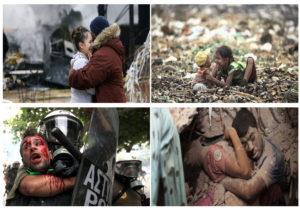
The importance of journalism
standards and ethics within photojournalism:Thre are unwritten rules about how to ethically approach photojournalism photography , They cover a wide range of topics such as how a photographer should act while taking pictures, what he or she can and can’t photograph, and whether and how an image can be altered in the darkroom or on the computer. This ethical framework evolved over time, influenced by such things as technological capability and community values; the voice of the photographer isn’t to make an image and scenario on that does not exist but purely to teach people they ave a choice of what their cations contribute to build important skills like researching, writing, interviewing and thinking critically.they have to be able to capture the image without improbity or effecting the person negatively and or making them feel like lesser of a personn as a flair in any sense of patronising.
The single shot:this is a highly powerful image which has a large impact in order to show a sense of fear within the society and how they themselves feel powerless to the occurring events surrounding themselves. the image conveys a clear raw image of oppression and a corrupt government patriarchal society. It also perhaps shows a sense of prejudice within the time and how the man is so afraid but that does not overcome the other mans hand of power.
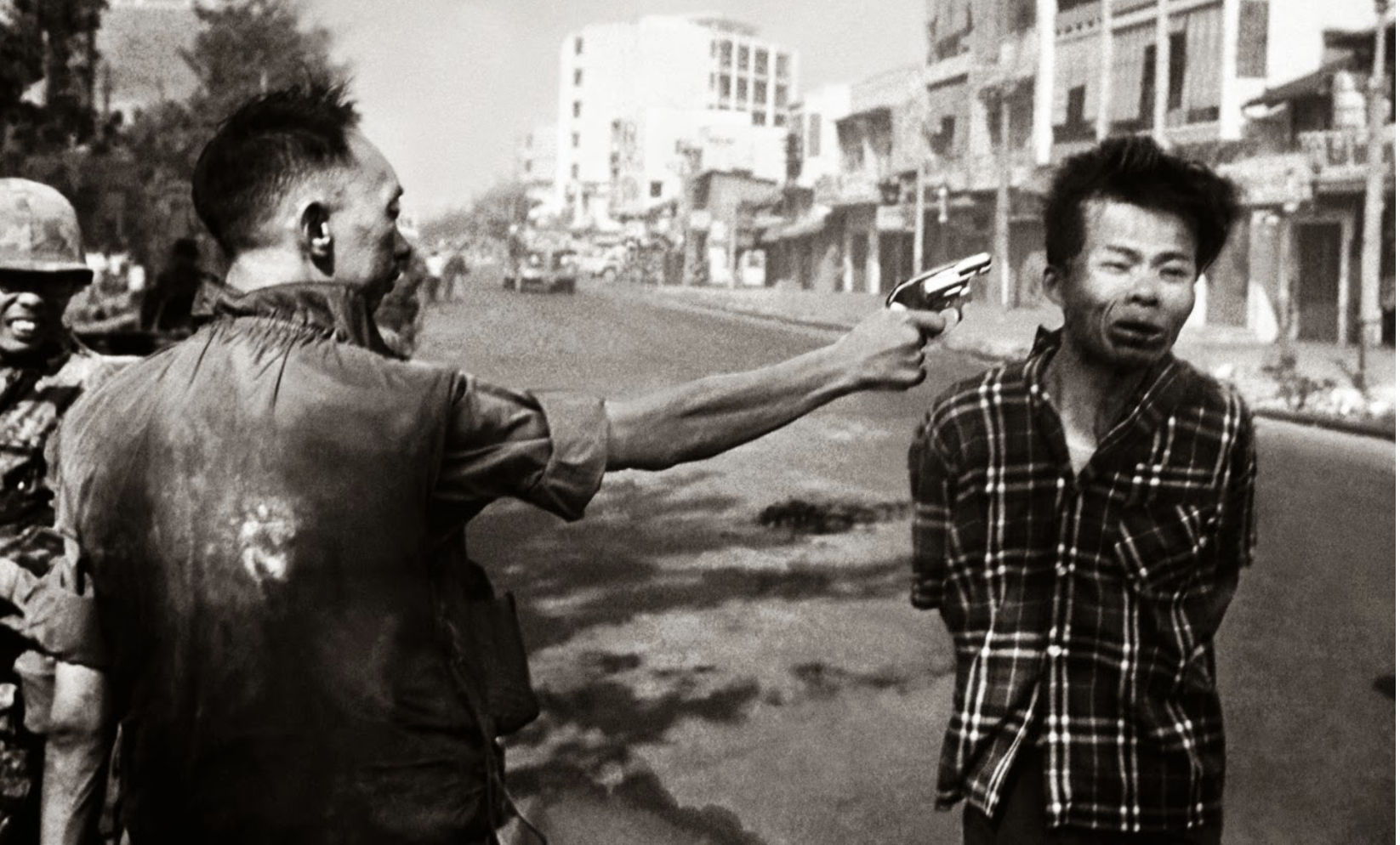
the picture story based is done in order to reenact a significant occsournace without mediation in order o create a significance impact to the social or government in order to use the images as a preventative for further conflicts. It is effective as a picture speaks a thousands words and so an accurate visitation is appropriate to express the struggles ins his these people my be facing. In other cases it also allows people to see how other people live and asa. historical factor and to see a gradual change. It is said that “The primary purpose of journalism is to provide citizens with the information they need to be free and self-governing,” It is an informative information necessary for citizens and a decider for themselves and not by the more powerful governing institutions.
Street Photography Contact Sheets
Contact Sheets

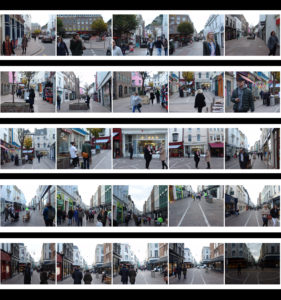
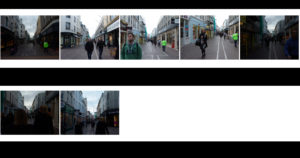
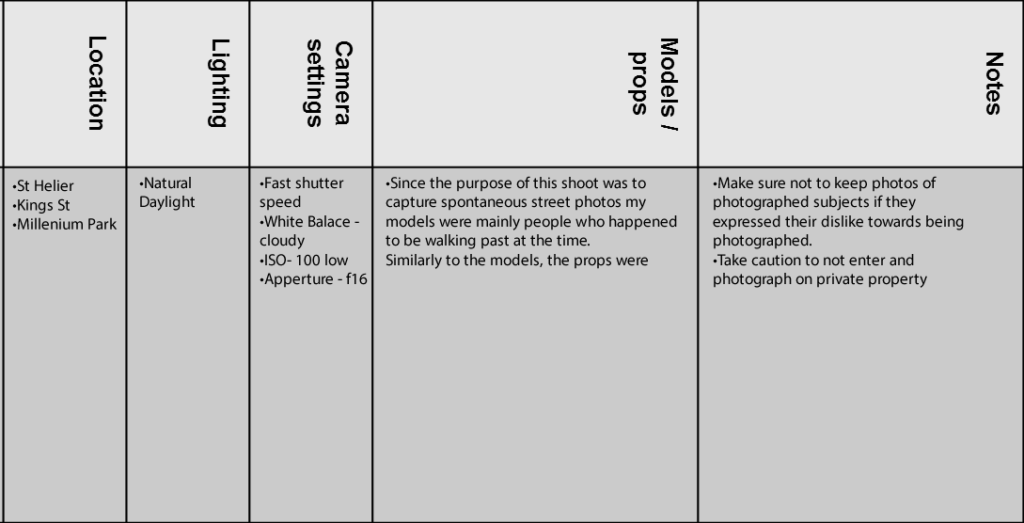
street photography artists




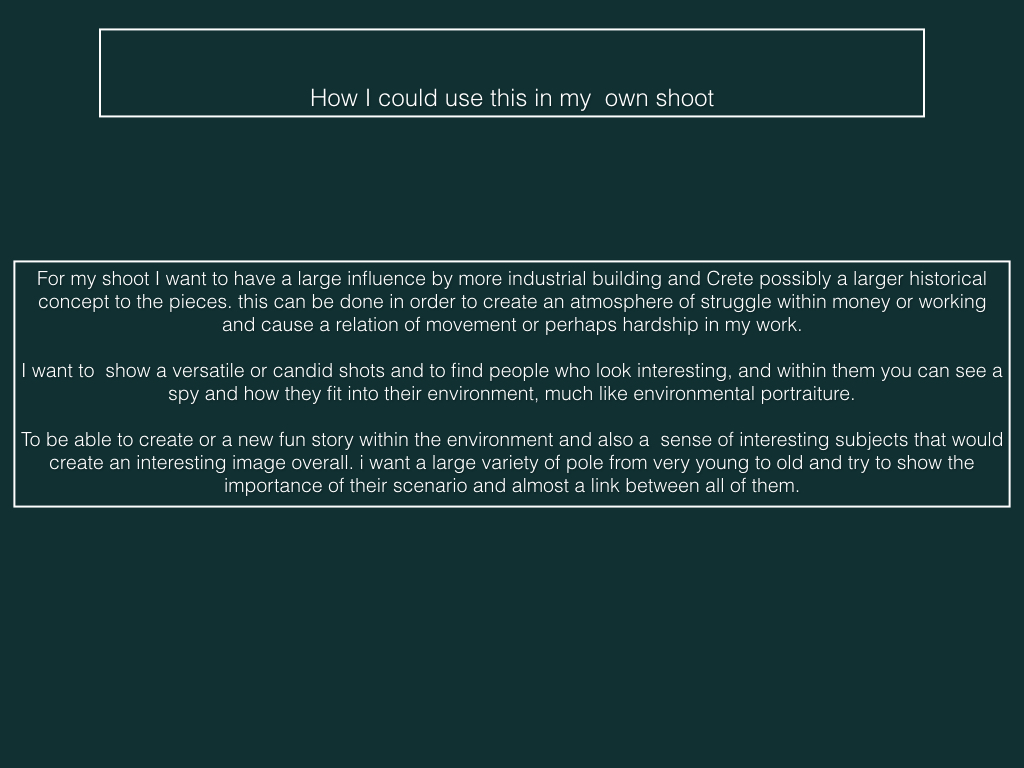




A LEVEL PHOTOGRAPHY TASTER | EXPERIENCE DAY | 9th / 10th NOVEMBER
COURSE OVERVIEW

ASSESSMENT OBJECTIVES
-
Develop ideas through sustained and focused investigations informed by contextual and other sources, demonstrating analytical and critical understanding.
-
Explore and select appropriate resources, media, materials, techniques and processes, reviewing and refining ideas as work develops.
-
Record ideas, observations and insights relevant to intentions, reflecting critically on work and progress.
-
Present a personal and meaningful response that realises intentions and, where appropriate, makes connections between visual and other elements.

TASTER LESSON: CONTEMPORARY PORTRAITS MINI-PROJECT
Learning Objectives: To develop knowledge and understanding of environmental portraiture. To explore and analyse the work of a photographer specialising in the genre. To create a meaningful response and evaluate progress.
“All photographs are memento mori.
To take a photograph is to participate
in another person’s (or thing’s)
mortality, vulnerability, mutability.
Precisely by slicing out this moment
and freezing it, all photographs
testify to time’s relentless melt.”
Susan Sontag
RESEARCH What is Environmental Portraiture?
Portraiture is by far the most popular of all photographic subjects. Portraiture allows for far more freedom than other forms of photography, simply because the subject can be moved around and posed with ease. Much of the composition can therefore be controlled by instruction – rather than just by viewpoint.
An environmental portrait is a portrait executed in the subject’s usual environment, such as in their home or workplace, and typically illuminates the subject’s life and surroundings. The subject often knows he/she is being photographed but a lot more emphasis is placed on location.
E.g.

August Sander

Arnold Newman

Dorothea Lange

Michelle Sank

Anthony Kurtz
What impact could photographing the subject in their usual environment have on the viewer?
ANALYSE Artist Reference
Who is Anthony Kurtz?

Anthony Kurtz is an award-winning, commercial, editorial and “art-documentary” photographer based in Berlin (formerly San Francisco). He specialises in environmental portraiture and strives to create beautiful and unexpected photographs of people and the spaces they occupy. Combining both natural light and studio strobes, Anthony sculpts light to create a mood, an atmosphere, a photograph that tells and story and, hopefully, sparks curiosity in the viewer.




ANALYSE Image Analysis
Apply a technical / visual / contextual / conceptual analysis to the below image – a photograph by Anthony Kurtz, taken from his series ‘No Man’s Job’, Senegal Africa, 2013.

The Guardian (2013) Big Picture: No Man's Job - female mechanics in Senegal by Anthony Kurtz https://www.theguardian.com/artanddesign/gallery/2013/apr/05/photography https://anthonykurtz.com/
Things to consider with environmental portraits…
Technical = lighting / exposure / lens / shutter speed
Visual = composition / framing / viewpoint / angle / eye contact / engagement with the camera / facial expression
Contextual = background / story / character(s) / connection to the photographer / social or political context?
Conceptual = meaning / idea behind the work / social documentary? / class? / gender role? / lifestyle?

PLAN Your Photo Assignment
Organise your shoot and discuss your ideas.
- Model(s)
- Location
- Lighting
- Camera Settings
- Context
- Concept
RECORD Create a Meaningful Response
Take 10-20 photographs each that show your understanding of environmental portraiture in the style of Anthony Kurtz.
Use the school as your setting, and students / each other as your characters / models.
Think carefully about specific setting, facial expression, pose, lighting, and composition.
EXPLORE Experiment and Review
Explore the camera settings and demonstrate camera skills.
Review your images (in camera).
EVALUATE & PRESENT Select Final Images
In your group, select one final image to present to the class.
Evaluate your image using the analysis model (technical/visual/contextual/conceptual).
Reflect.
- What went well?
- Would you do anything different next time?
- How might you experiment further with your photographs – camera skills / photo editing skills (Photoshop)?
Henri Cartier-Bresson
Who is Henri Cartier-Bresson? Henri Cartier-Bresson was born in Chanteloup-en-Brie, Seine-et-Marne, France. He was the oldest of five children, with his father being a wealthy textile manufacturer. His mother's family were cotton merchants and landowners from Normandy, where Henri spent part of his childhood. His parents supported him financially so Henri could pursue photography more freely than his contemporaries. Henri took holiday snapshots with a Box Brownie; he later experimented with a 3×4 inch view camera. His father assumed that his son would take up the family business, but Henri also feared this prospect. Returning to France, Cartier-Bresson deepened his relationship with the Surrealists. He became inspired by a 1930 photograph by Hungarian photojournalist Martin Munkacsi showing three naked young African boys, caught in near-silhouette, running into the surf of Lake Tanganyika. Titled Three Boys at Lake Tanganyika, this captured the freedom and grace of their movement and their joy at being alive. That photograph inspired him to stop painting and to take up photography seriously. Some of the work he started to produce consisted of: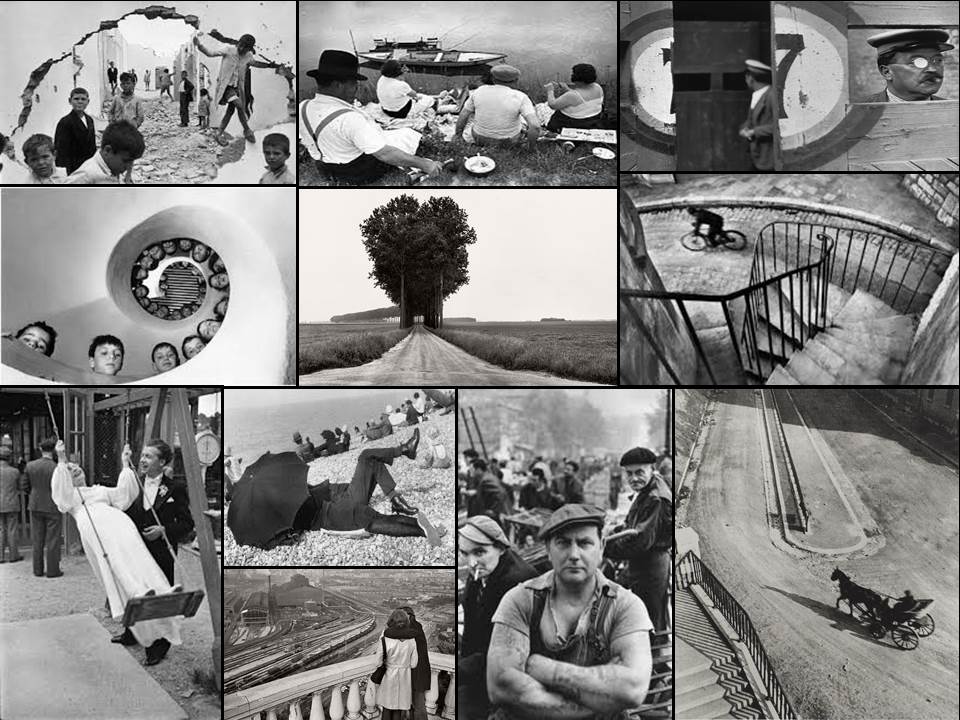
From this selection of a few of his images, I found that my eye was drawn to the picture of the wall crumbled in.
The contrast between the subjects within and the white crumbling wall, which in a way frames the image, allows the photograph to really define the faces of the individual children. From this it allows us to see the different expressions of each child, some seem to be captivated by this photographer taking the picture, whilst others are completely oblivious to it. Allowing the photographer to capture the playfulness but also the curiosity that is seen within each child. The fact that some of the children are playing on rubble, shows how that even in the worst scenarios, kids always make the best out of what they have, showing that innocence within.
Representation, Standards and Ethics in Photojournalism
The job of photojournalists is to show the world what is happening in a visual form. This can often be controversial subjects such as war or famine. The photojournalist is ethically bound to not change the story as they should show the real picture that the world deserves to see. It can be hard for photojournalists to keep these ethics – especially whilst trying to capture the shot that everybody needs to see.
These photojournalists can often come under fire for their controversial photographs. An example of this is Kevin Carter. Carter took this photograph and it was posted in the New York Times in 1993. There was a lot of reaction from readers but it was not positive. People were saying that Carter was inhumane for taking this photograph and that he should’ve dropped the camera and tried to help the little girl. A year after this was published, Carter killed himself due to the backlash. It later turned out that the supposedly girl was in fact a boy and was being taken care of by the UN food aid station. This shows that cropping and lack of context in an image can completely change what the image is showing, and it can be a powerful tool.
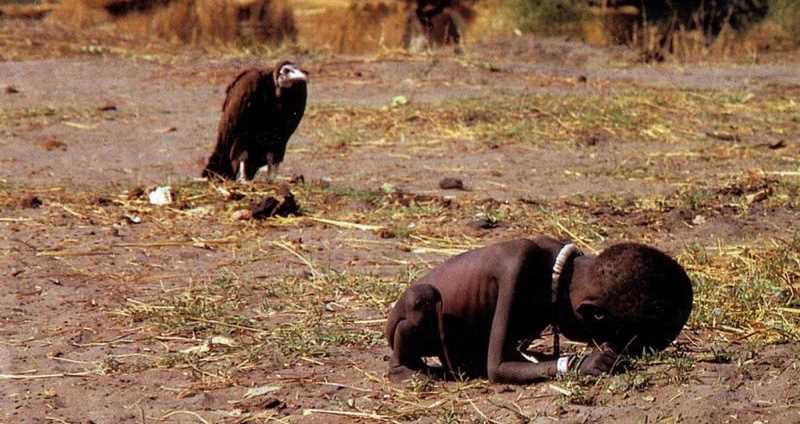
Photo Stories and Stories in a Single Shot
Photo Stories
A visual story is often called a ‘photo essay’ or ‘photo story’. Photo stories allow photographers to narrate a story with a series of photographs. Images are ordered in a specific way with the aim of the viewer seeing them as a story rather than a series of images. Captions are often used with photo essays but it is the images themselves that should be telling the story – the caption is only there to provide some context.

Stories in a Single Shot
It doesn’t have to be a series of photographs that tells a story; stories can be told in one photograph. For example the one below. This photograph was captured in 1968 by Eddie Adams in Vietnam. Adams thought that he was watching the interrogation of a prisoner but to his surprise, as he looked through his viewfinder he saw a pistol being raised to the prisoner’s head. This photograph caught the emotion and action of everyone involved and showed the world what life is like in different places from just one photograph.

Henri Cartier – Bresson
Who is Henri Cartier-Bresson?
Henri Cartier-Bresson was a french humanist and candid photographer, Henri was also a user of 35 mm film when taking his photographs. Henri developed the genre of street photography and viewed photography as capturing a devise moment. Henri is told to be one of the most original, accomplished, influential, and beloved figures in the history of photography.


These images can be found on the website below.
http://pro.magnumphotos.com/C.aspx?VP3=CMS3&VF=MAGO31_10_VForm&ERID=24KL53ZMYN
Image analysis

This is a black and white candid photography of a man sleeping. This photography heavily falls under the rule of thirds as the man is one of the 4 intersecting lines on the bottom right of the image, this is supported by the fact we are attracted straight to the man as it is the first thing we focus on when looking at this image. This is a very dark image but there is also a strong contrast between the mans dark clothes and the whites on his clothes allowing the man to stand out more in the image. The lighting is soft and dim as there the picture is still very dark but the one side of his face that we are able to see is lit up meaning that there is a source of dim lighting within this image. I really like this image as this image creates a story for the viewer as to what life was like back in the 1930s.
